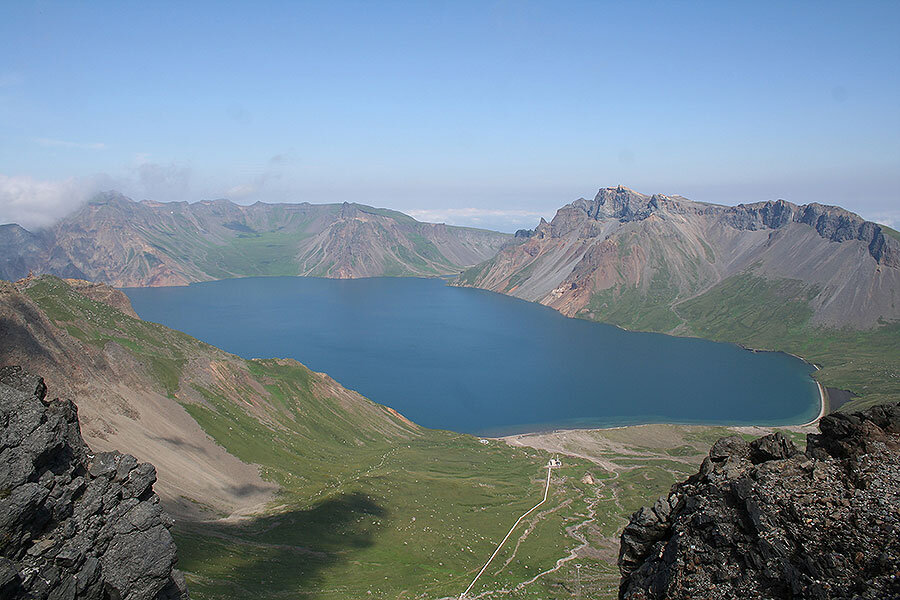Mt. Paektu mystery: Biggest volcanic eruption but little effect on the climate?
Loading...
The eruption of Mount Paektu in AD 946 was likely the largest volcanic event in recorded history – but evidence suggests it had a surprisingly small effect on the weather.
Confused by this anomaly, a team of international researchers from Britain, North Korea, China, and the United States measured the sulfur levels in newly collected magma samples to determine exactly how much of the gas the famous North Korean mountain pumped out, and why it apparently had little climatic influence.
The mountain, which straddles the border of North Korea and China, is the subject of many songs and legends. More than 1,000 years ago, it was the site of what was likely the largest volcanic event in recorded history, dubbed the Millennium Eruption. When little earthquakes started shaking the mountain between 2002 and 2005, North Koreans began to worry that Paektu might be gearing up to blow.
Earthquakes on a volcano do often precede an eruption, explained volcanologist Kayla Iacovino to NPR, "so people in the region – including North Korea – started becoming a little bit wary."
That possibility worried the North Korean government enough that it broke from its typically isolationist protocol and invited a team of international researchers from the United States, Britain, and China to study the mountain together. Since 2013, they have published two studies, most recently in the journal Science Advances.
It took more than two years to organize permission for the scientists to travel to North Korea. Even then, due to Western rules against bringing technology with military applications into North Korea, the scientists had to leave some instruments behind.
The team has now determined that the eruption spewed much more sulfur into the atmosphere than previously thought: up to 42 megatons, more than the infamous Tambora eruption of 1815 that caused the so-called Year Without a Summer in 1816.
By calculating the difference between the amount of sulfur in magma drops flash-frozen in the site's pumice – which represented the amount of sulfur present before the eruption – and the amount of the gas in magma that cooled after the eruption, the research team could determine the amount of sulfur released into the air a millennium ago.
"We can now say that the eruption of Paektu was probably one of the largest eruptions in the last couple thousand years – not only in terms of the ash and rock output, but also in terms of the gas output," Dr. Iacovino told NPR.
Evidence of such a massive eruption's impact on the climate, however, is low: Greenland ice cores show a small up-tick in absorbed sulfur, but only about 5 percent of what scientists would expect from such a large eruption.
To explain this, the researchers point to Mount Paektu's latitude, noting that "perturbations in climate following eruptions at high latitudes are much smaller and shorter-lived than if the same eruption had occurred in the tropics." Any cooling impact may have also been decreased because the explosion took place during winter, when atmospheric gases can be pulled out of the air by snow and rain more quickly than they do in summer.
For some scientists, those reasons aren't persuasive enough to explain the disparity. "With the large sulfur emissions they claim, there would certainly be deposition in Greenland even if the eruption was in the winter," Alan Robock, a climatologist at Rutgers University's School of Environmental and Biological Sciences, told Science.
"This paradoxical case in which high [sulfur] emissions do not result in a strong glacial sulfate signal may present a way forward in building more generalized models for interpreting which volcanic eruptions have produced large climate impacts," the researchers write.








